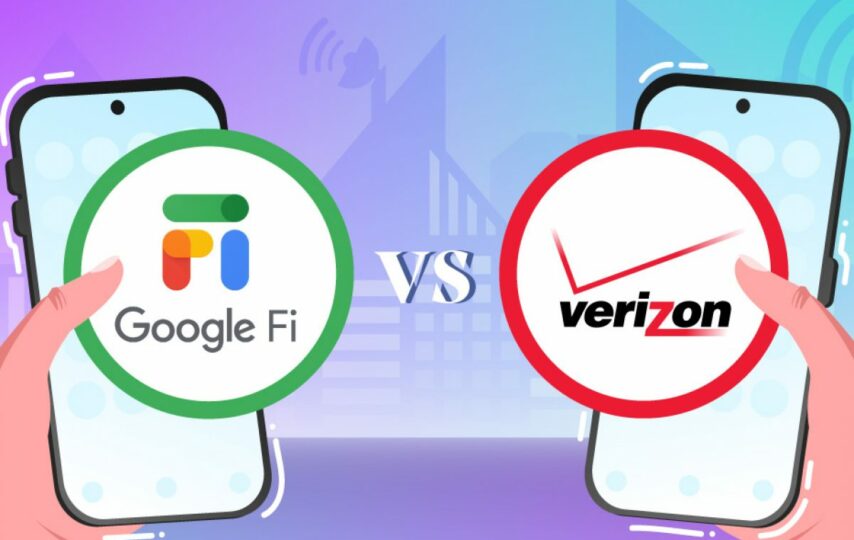In the debate between young vs. old, there can only be one winner when it comes to the top carrier. The battle is between Verizon vs Google Fi. The first one is a long-standing leader in the US carrier market with a vast selection of plans and coverage. And the later one is newer player that continues to expand with its distinctive network structure.
Each carrier has its strengths and weaknesses, and only one can be the best fit for your needs. Throughout this comparison of Google Fi vs Verizon, we will consider factors such as pricing, coverage, and promotions. So, are you ready for the breakdown? Let’s begin!
Comparison of their Pricing
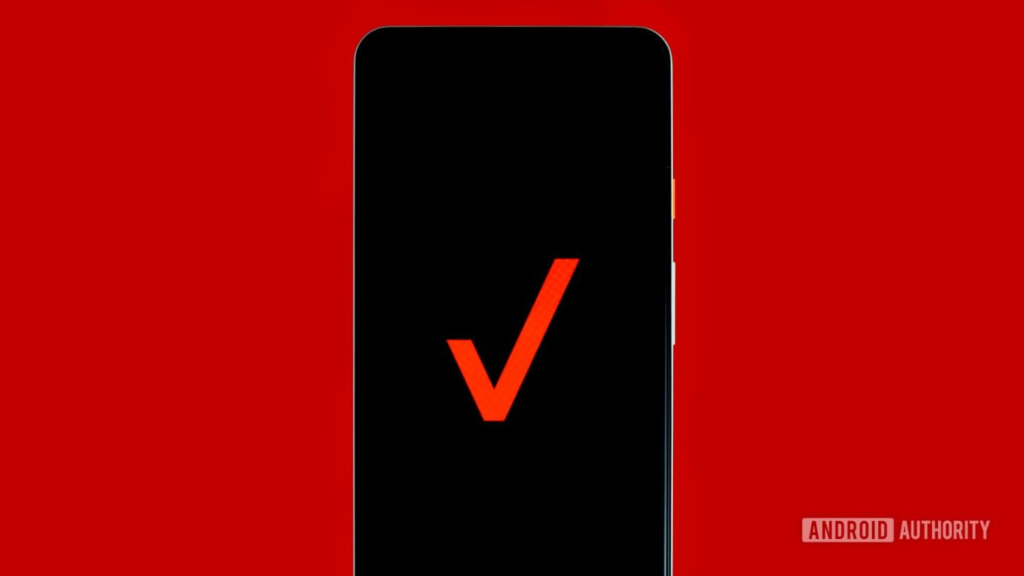
Image Credit- android authority
Verizon is known to be one of the pricier carriers in the market. Compared to Google Fi, Verizon’s unlimited plans typically cost $5 to $10 more per month. Google Fi’s Unlimited Plus plan is quite similar to Verizon’s Start Unlimited, with both starting at $70.
However, if you have four lines, Verizon’s Start Unlimited plan costs $35 per line, which is cheaper than Google Fi’s $45 per line. If you opt for one of Verizon’s higher-level unlimited plans, you can expect a higher monthly bill. But with it comes with added benefits and perks.
Verizon has recently introduced a more affordable plan called Welcome Unlimited, starting at $65 per month. However, this plan does not include many streaming perks and offers the only access to the 5G Nationwide network, without many additional benefits.
On the other hand, Google Fi’s new Simply Unlimited plan starts at $60 per month. That makes it a more affordable option than Verizon. As you add additional lines, the cost decreases further. For example, the second line costing $45 per month and the third and fourth lines each costing only $30.
Comparing one unlimited plan to another is relatively straightforward. But Google Fi has a unique feature known as the Flexible Plan. It offers more flexibility in terms of data usage and pricing.
If you’re someone who doesn’t expect to use a lot of data, Google Fi’s Flexible Plan could be a good option. To begin with, the pricing plan comprises a fixed monthly fee of $20 for one individual line. In addition, the utilization of each gigabyte of data incurs an extra charge of $10. Google Fi also offers bill protection. So you won’t have to pay more than the price of 6GB of data as a single line.
Alternative Option
However, if you’re looking to save money, you may want to consider an MVNO (mobile virtual network operator) instead. While there may be some tradeoffs, we highly recommend looking into Metro by T-Mobile and Visible for more affordable options.
Google Fi vs Verizon — Which Offers Better Coverage?
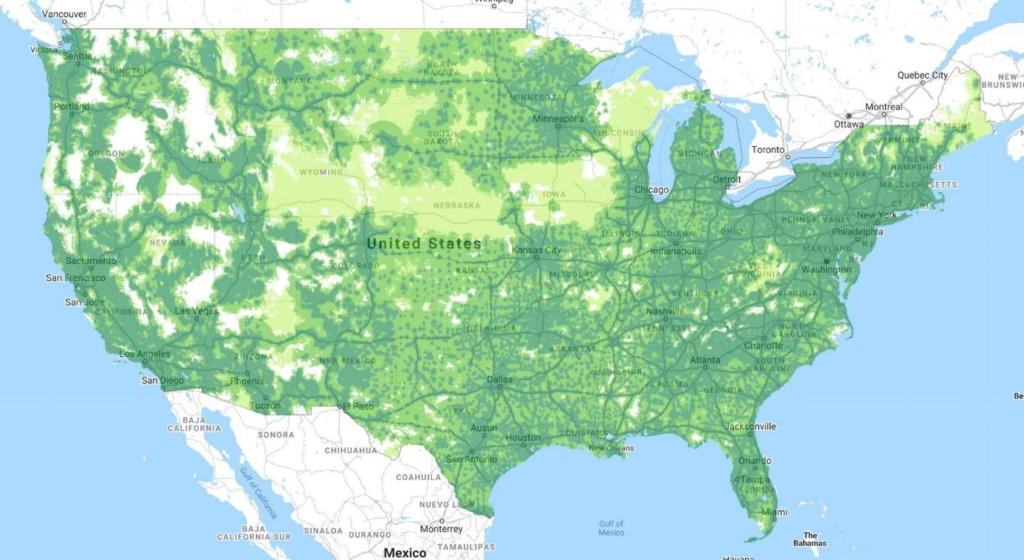
One significant advantage that Google Fi has over Verizon is its innovative network structure. Rather than relying on a single carrier for coverage, Google Fi utilizes T-Mobile, UScellular, and the remnants of Sprint to create an extensive network coverage area. If your phone is compatible with Google Fi, it will automatically switch between the three networks to provide you with the best possible signal.
The map above shows Google Fi’s 4G LTE coverage (indicated by dark green regions) as well as its 3G and 2G coverage (lighter areas). While Google Fi’s service may not be perfect, it has made significant progress in recent years.
For those with a 5G-capable device, Google Fi offers access to T-Mobile’s nationwide network without any additional charges. You can easily check the coverage in your local area by entering your zip code on Google Fi’s website.
In contrast, Verizon boasts the largest 4G LTE network among major US carriers. It also covers up to 70% of the United States. This widespread coverage provides dependable service and high-speed data for most users across the country.
Verizon is also known for delivering some of the fastest 5G speeds, although their mmWave network has some limitations. However, for those outside of mmWave coverage areas, Verizon’s recently launched Nationwide 5G network offers more accessible coverage. You can check out the coverage map for Verizon’s Nationwide 5G network on their website.
Google Fi vs Verizon — Which One Should You Choose?
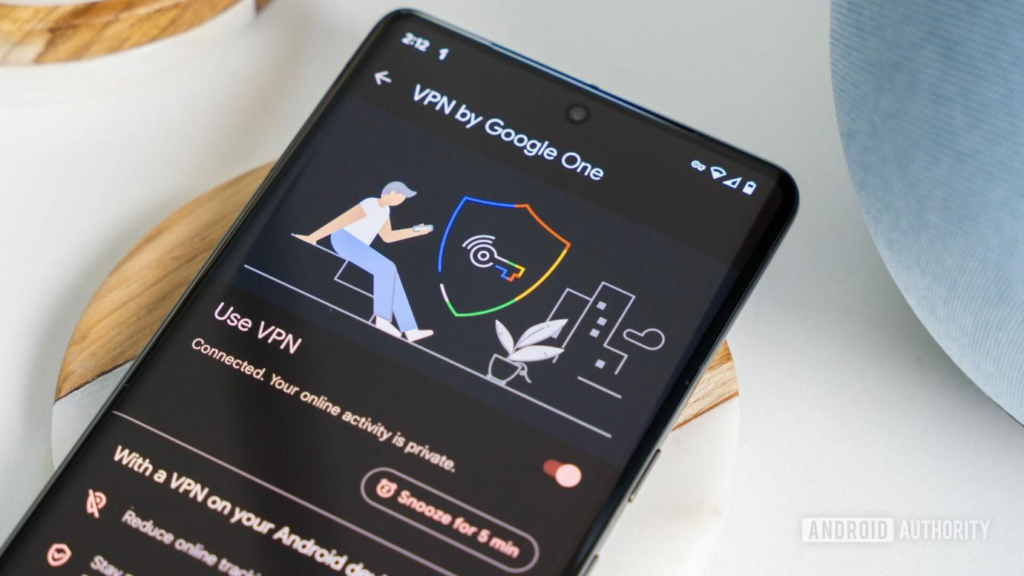
Image Credit- android authority
Although coverage and pricing are essential factors to consider, additional perks and promotions are crucial to complete your service package. Verizon takes the lead in this category, especially when it comes to streaming services. If you are a fan of shows like Mandalorian or love listening to Apple Music, Verizon’s plans are the way to go.
All of its unlimited plans, except Welcome Unlimited, provide access to these services. However, Start Unlimited and Do More Unlimited offer only six months of access. But Play More includes a permanent bundle of Disney Plus and six months of Apple Music.
Verizon has an advantage over Google Fi when it comes to streaming perks and promotions, except for the new low-cost Welcome Unlimited plan. Verizon’s unlimited plans, other than the Welcome Unlimited plan, include both Apple Music and Disney Plus, with the duration of access varying based on the plan.
Play More offers six months of Apple Music and a permanent Disney Plus bundle, while the top-tier Get More plan includes both services permanently. Additionally, all plans now come with up to one year of Discovery Plus and Apple Arcade or Google Play Pass.
On the other hand, Google Fi’s Unlimited Plus plan comes with a valuable Google One membership that provides cloud storage, discounts, and support for Google products, which is worth $2 per month. When it comes to promotions, Verizon has the upper hand.
While Google Fi offers savings on select devices like the Galaxy S23 family and Pixel 7 with Pixel Pass, Verizon has a wider range of devices to choose from, and they offer substantial discounts of a few hundred dollars on most flagships when you switch. Currently, Verizon is offering the Galaxy S23 or Pixel 7 for free when you trade in a device.
Phone Selections
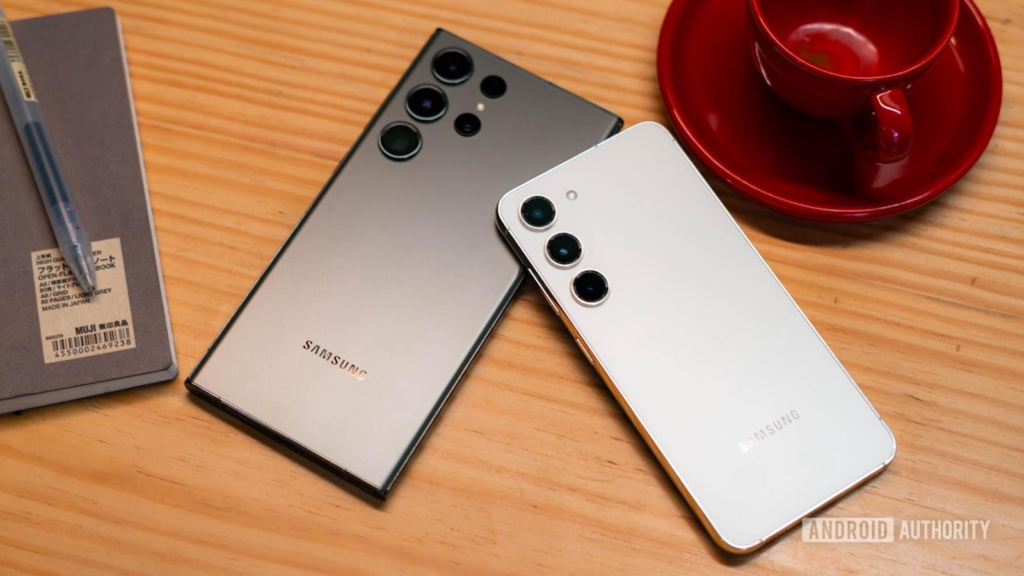
Image Credit- android authority
Verizon has an extensive device lineup that covers most smartphones available in the market. However, the devices supported by Verizon are limited to CDMA devices only. Additionally, some of Verizon’s 5G phones are designated as UW (ultrawide), which means that they are optimized for Big Red’s mmWave network.
With the recent launch of Nationwide 5G, it is now possible to use a 5G-ready device on Verizon’s network or purchase a device that is universally unlocked. Google Fi has an extensive list of supported devices, including the Pixel family, the entire S22 range, and most other Android and Apple devices.
The carrier also supports some lesser-known OEMs like Xiaomi and HUAWEI. Meanwhile, Verizon also supports a wide range of devices, as long as they are CDMA-compatible. It has a strong selection of 5G phones that are configured for its mmWave network under the UW name. To help you choose, we have compiled a list of the best phones available from both carriers.
Final Words
Finally, it’s time to answer the question you’ve been eagerly awaiting: who emerges victorious in the Google Fi vs Verizon showdown? Well, the answer isn’t straightforward, as it depends on your specific requirements.
If a vast network and an array of benefits are high on your priority list, then Verizon is the way to go, but bear in mind that you’ll have to pay a premium for this level of coverage. If you’re seeking a more affordable option with Verizon, you’ll likely have to forego many of the perks that make the carrier attractive in the first place.
Google Fi offers two plans and a limited selection of phones to choose from. By utilizing the networks of T-Mobile and UScellular, Google Fi offers dependable coverage with easy switching between networks. Google Fi is also a great choice for international travel.

